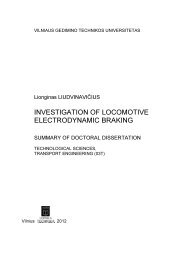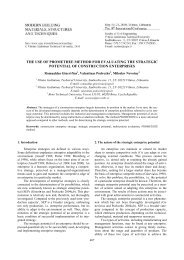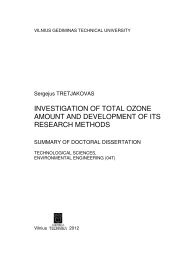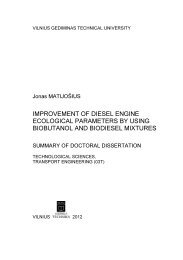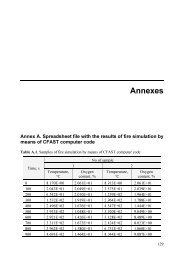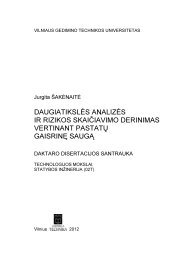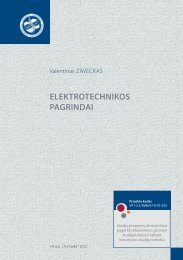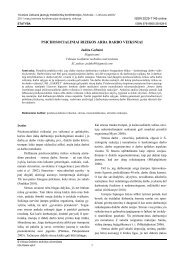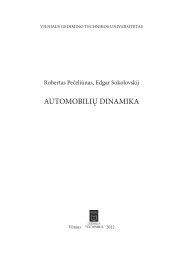ðÑÂрþôøýðüøúð òþ÷ôухþþчøÑÂтýых уÑÂтрþùÑÂтò Ѡ÷õрýøÑÂтыü ÑÂûþõü
ðÑÂрþôøýðüøúð òþ÷ôухþþчøÑÂтýых уÑÂтрþùÑÂтò Ѡ÷õрýøÑÂтыü ÑÂûþõü
ðÑÂрþôøýðüøúð òþ÷ôухþþчøÑÂтýых уÑÂтрþùÑÂтò Ѡ÷õрýøÑÂтыü ÑÂûþõü
You also want an ePaper? Increase the reach of your titles
YUMPU automatically turns print PDFs into web optimized ePapers that Google loves.
315<br />
and Sontag as well as methods for porosity identification discussed considering<br />
the cylinder- and ball-shaped granular layers of charging. The chapter presents the<br />
X-ray-gram of ball-shaped granules the diameter of which reaches 9.5 mm and<br />
the dependences of their porosity on a charge form and on the diameters of the<br />
granules and device. Subject to the ratio between the sizes of the dimensions of<br />
the device and granules (D/d), the porosity of granular charging may fall from 30<br />
to 80 %. Granules in the forms of balls, cylinders and irregular Raschig rings were<br />
selected for investigation. Research produced the expressions of the coefficients of<br />
the porosity of granules having these forms. As determined during investigations,<br />
with a ratio between the dimensions of the device and granules (D/d) increasing<br />
the porosity of a granular charge is decreasing. When D/d changes from 5 to 20<br />
the porosity of cylinder-shaped granules decreases from 41 to 38 %. The sharpest<br />
decrease in porosity is obtained when the ratio of the dimension sizes of the device<br />
and granules increases from 1 to 5. The curves of the dependence of porosity on the<br />
ratio of the dimensions of the device and granules (D/d) presented in this chapter<br />
allow determining the medium porosity of a layer composed of granular charging.<br />
Chapter 4 The Peculiarities of Gas Distribution in Devices with a Granular<br />
Charge Layer describes various factors having an influence on gas distribution<br />
within a granular charge layer. Careful attention is devoted to describing device and<br />
granule dimension ratio (D/d) responsible for gas distribution within the layer. The<br />
dependences of airflow rate on device structure and granule sizes are presented. The<br />
chapter examines the ball-shaped granules of different sizes (0.25–8.7 mm) present<br />
in the devices of different dimensions (device diameters reaching 40-94 mm). The<br />
dependences of airflow distribution on the charge layer and airflow rate supplied<br />
to the device are described. As determined during investigations where the initial<br />
airflow rate supplied to the device is from 1–2 m/s, the disparity of gas distribution<br />
in the charge layer does not change, whereas where airflow rate is below 1 m/s<br />
the disparity of gas distribution starts growing (Morales et al. 1951; Price 1968;<br />
Cairns, Prausnitz 1959; Ziolkowska et al. 1983; Dorweiler, Fahien 1959; Bundy<br />
1966; Schwarz, Smith 1953; Leroy, Froment 1977). The impact of the non-isothermal<br />
layer on gas flow distribution is described. The conducted investigations have<br />
revealed that a non-isothermal character of charging has an impact on the distribution<br />
of airflows. It has also been determined that upon increasing the temperature<br />
of gas passed through the granular charge composed of 3 mm granules in diameter<br />
from 293 to 473 K, the initial to maximum rate ratio (W max /W 0 ) decreased by 15%.<br />
This chapter presents and describes the stands intended for research on aerodynamic<br />
processes occurring in charges and analyses their structures. One-cassette and threecassette<br />
devices were analysed in detail (Moscicka et al. 1976; Ziolkowska et al.<br />
1983; Dorweiler, Fahien 1959 et al.). The chapter presents airflow distribution occurring<br />
after gas has flown through the granular layer of charging and a theoretical<br />
calculation of the distribution of gas flow passed through the charge. It describes the



